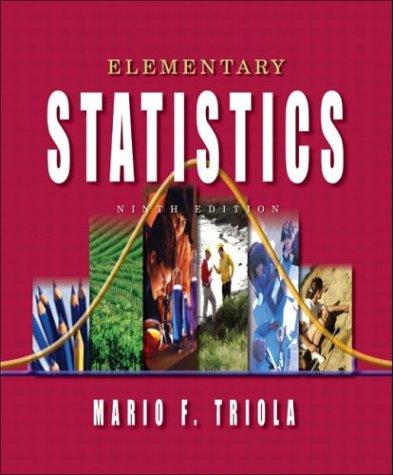Using t Test Five independent samples of 50 values each are randomly drawn from populations that are
Question:
Using t Test Five independent samples of 50 values each are randomly drawn from populations that are normally distributed with equal variances. We wish to test the claim that m1 5 m2 5 m3 5 m4 5 m5.
a. If we used only the methods given in Section 8-3, we would test the individual claims m1 5 m2, m1 5 m3, and so on. How many ways can we pair off the five means?
b. Assume that for each test of equality between two means, there is a 0.95 probability of not making a type I error. If all possible pairs of means are tested for equality, what is the probability of making no type I errors? (Although the tests are not actually independent, assume that they are.)
c. If we use analysis of variance to test the claim that m1 5 m2 5 m3 5 m4 5 m5 at the 0.05 significance level, what is the probability of not making a type I error?
d. Compare the results of parts
(b) and (c). Which approach is better in the sense of giving us a greater chance of not making a type I error?
Step by Step Answer:






